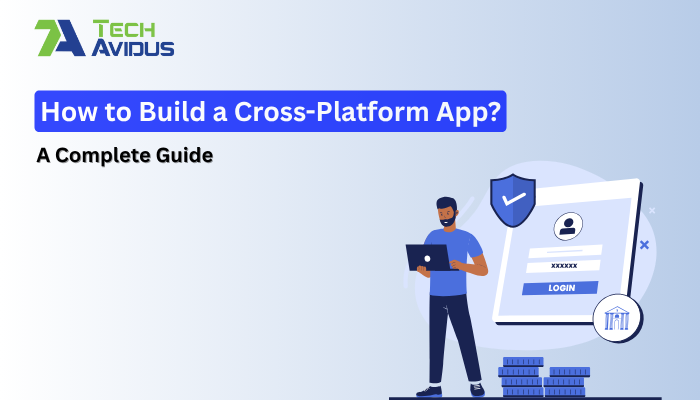
The demand for cross-platform apps is increasing in today's rapidly evolving tech landscape. As businesses strive to reach a wider audience, the need for apps that can run seamlessly on different platforms is more crucial than ever. In this comprehensive guide, we'll delve into the complexities of how to build a cross-platform app and ensure you understand the ins and outs of this exciting venture. Whether you're a seasoned developer or a beginner in app development, this guide has helped you.
Cross-platform apps, also known as cross-platform software or cross-platform applications, are software applications that are designed and developed to run on multiple operating systems and platforms. This means that a single codebase can be used to create applications that work seamlessly on different platforms, such as various mobile operating systems (e.g., Android and iOS), desktop operating systems (e.g., Windows, macOS, and Linux), and web browsers.
Before we delve into the "how," it's essential to understand the "why." Cross-platform apps, as the name suggests, are applications that can work across multiple operating systems, like Android and iOS. The key advantages of these apps include:
Now that you understand why cross-platform apps are crucial let's explore the steps to build a cross-platform app.
Define Your App's Objectives
Before you start writing code, clearly defining your app's objectives is essential. What problem does it solve? Who is your target audience? What features will it have? The answers to these questions will shape your development process.
Choose the Right Cross-Platform Framework for Building a Cross-Platform App
Selecting the appropriate framework is a pivotal decision. There are several popular options available, including:
Each framework has strengths and weaknesses, so consider your project requirements.
Design the User Interface (UI) for Building a Cross-Platform App
Create an intuitive and user-friendly UI that aligns with your app's objectives. Ensure your design is responsive, as it will be displayed on various screen sizes and resolutions.
Write the Code for Building a Cross-Platform App
This step involves writing the actual code for your app. Thanks to the cross-platform framework you've chosen for building a cross-platform app, you can write a single codebase that will work on Android and iOS devices.
Testing
Thorough testing is critical to ensure your app functions correctly on all intended platforms when building a cross-platform app. Address any bugs or issues that arise during testing.
Optimize for Performance
Pay attention to performance optimization when building a cross-platform app. Cross-platform apps should run smoothly and be responsive on various devices.
Publish Your App
Once you're satisfied with the app's performance when building a cross-platform app, it's time to publish it on the Google Play Store and Apple App Store. Ensure you meet all the necessary guidelines and requirements for each platform.
Maintain and Update
Your app development journey continues after the launch. Regularly update your app to fix bugs, introduce new features, and adapt to changes in the mobile ecosystem when building a cross-platform app.
Building a cross-platform app is an exciting venture with immense potential. By following this step-by-step guide on how to build a cross-platform app, you can develop a cost-effective, efficient, and versatile app that caters to a broad audience. Remember that the success of your app depends on clear objectives, the proper framework when building a cross-platform app, and a commitment to ongoing improvement. Now, develop your cross-platform app, quickly reaching Android and iOS users!
Our Top 1% Tech Talent integrates cutting-edge AI technologies to craft intelligent, scalable, and future-ready solutions.
All Rights Reserved. Copyright © 2025 | TechAvidus